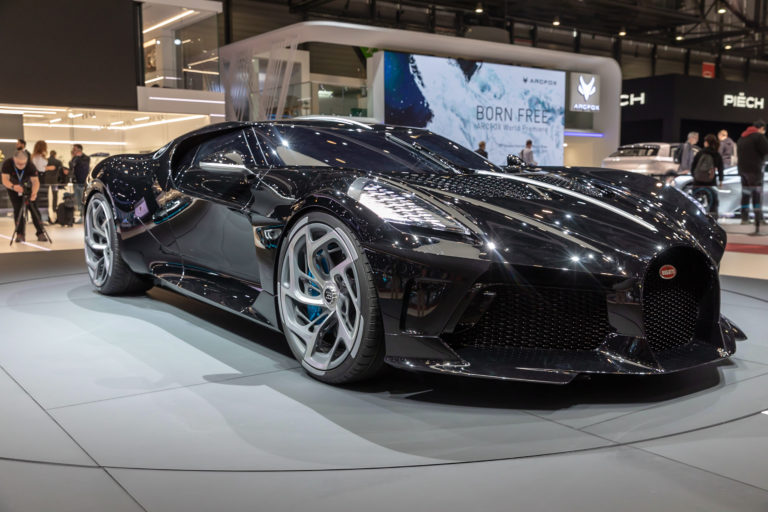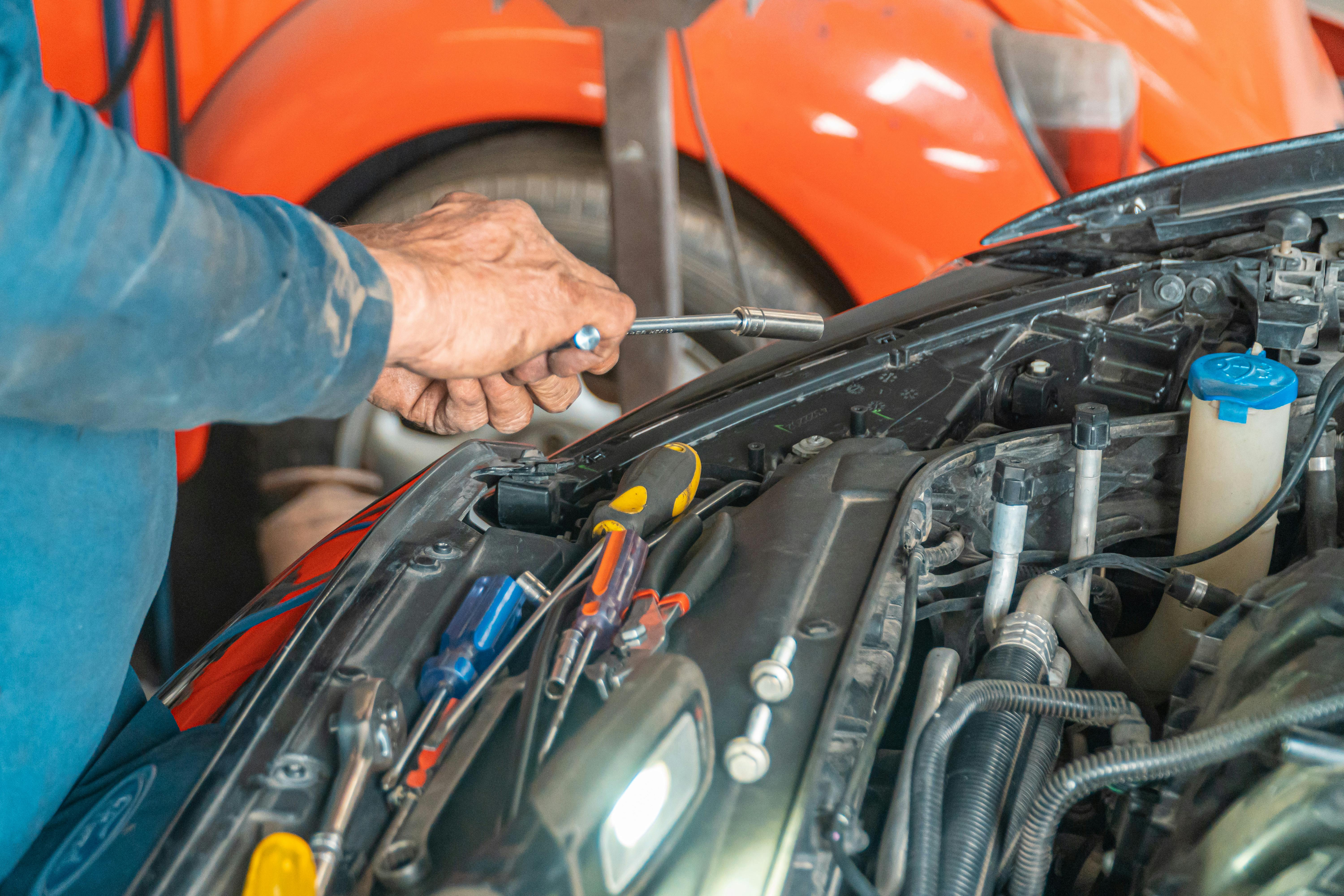
In today’s automotive landscape, the expectation is simple: new cars should be safer cars. Automakers frequently tout sleek designs, next-gen technology, and an array of features that make it easy to assume that cutting-edge safety naturally comes with the package. But, as anyone who’s spent more than five minutes digging into the data knows, that’s not always the case. Some brand-new models, fresh off the assembly line, still manage to fall short—sometimes spectacularly—when put through the paces of rigorous safety testing. It’s a sobering reminder that innovation in one area doesn’t automatically translate to rock-solid protection.
We’re not talking about obscure, niche vehicles here. We’re talking about cars from well-known brands, models that consumers often choose for their daily commutes, family hauling, or even just for a bit of driving excitement. Weak crash protection, poor structural integrity, or the puzzling absence of key safety features continue to show up, even among models that seem to tick every other box. This is precisely why the grueling evaluations from organizations like the Insurance Institute for Highway Safety (IIHS) and the National Highway Traffic Safety Administration (NHTSA) are so incredibly vital. They are the ultimate arbiters, running cars through demanding scenarios that cover everything from frontal and side impacts to rollover risks, revealing what really happens when the rubber meets the road—or, more accurately, when the sheet metal meets an immovable barrier.
So, if you’re under the impression that a higher price tag or a ‘new for 2025’ badge guarantees top-tier safety, it’s time for a reality check. We’ve compiled a list of cars that, despite their recent introductions or updates, have genuinely ‘wrecked their launch’ in crucial crash tests. We dove deep into the IIHS’s ‘Poor’ or ‘Marginal’ ratings in critical areas like small overlap front collisions and side impact strength, alongside NHTSA’s star system, to unearth the models that simply didn’t hold up when it mattered most. For those who prioritize safety above all else, consider this your essential guide to the new cars that, surprisingly, fell short.
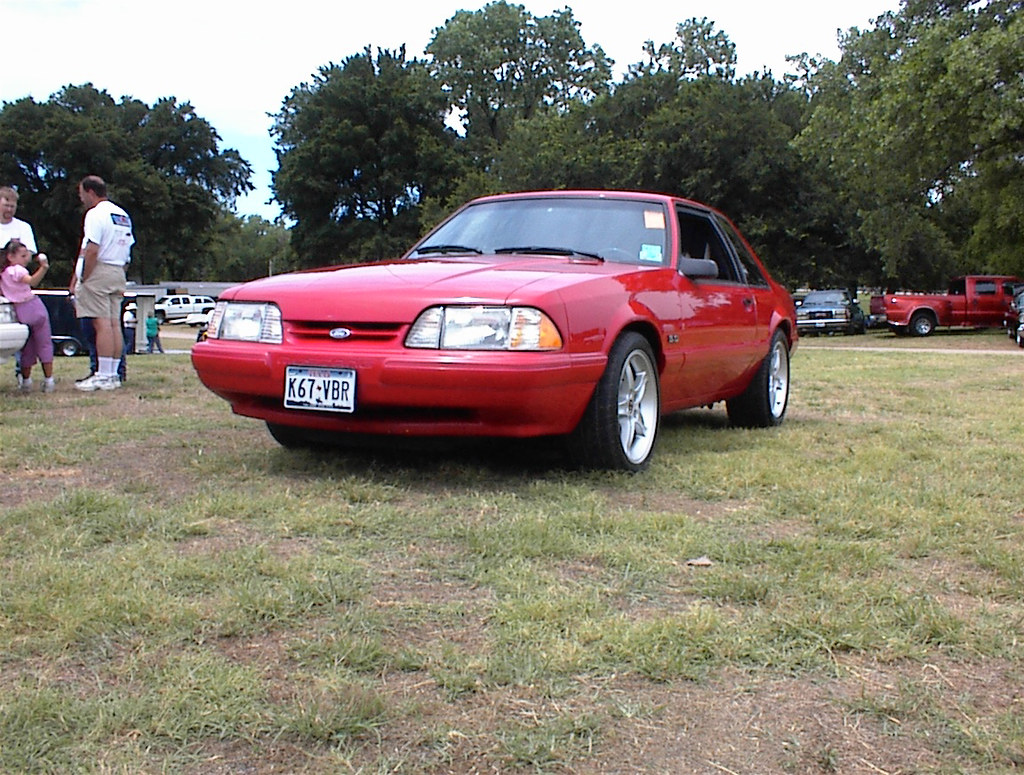
1. **2025 Ford Mustang Coupe**The 2025 Ford Mustang Coupe arrives with all the fanfare you’d expect from an iconic American muscle car. It’s sharper, more digital, and still packs a serious punch, whether you opt for the turbo four-cylinder or the V8. Ford has clearly focused on performance, style, and attitude, keeping that decades-old tradition alive and well. It’s a car designed to thrill, to turn heads, and to make every drive feel like an event. But, as we’ve seen time and time again, raw performance doesn’t always go hand-in-hand with cutting-edge safety.
Beneath all that aggressive styling and powerful engine options, safety isn’t exactly the Mustang’s strong suit. While it managed a respectable five-star overall rating from NHTSA, a closer look at the details reveals some concerning weak spots. Rear side-impact protection, for instance, drops to a four-star rating—a worrying dip for any passenger vehicle, let alone one that might carry friends or family. Furthermore, its rollover risk clocks in at 7.9%, which, while not the absolute worst, is certainly a figure worth noting when considering overall vehicle stability in a severe accident.
Where the Mustang truly stumbles is in IIHS testing. It earned a ‘Marginal’ rating in the critical structure and safety cage category, a finding that should give any safety-conscious buyer pause. This rating signifies weaker lower body protection and clear signs of structural strain during impact, suggesting that the passenger compartment might not maintain its integrity as well as competitors. Adding to these concerns, LATCH access for backseat child seats was also rated ‘Marginal,’ which can make properly securing child restraints a frustrating and potentially unsafe ordeal.
Sure, the 2025 Mustang comes with forward collision warning and crash-imminent braking, which are definitely good starting points for active safety. However, much of the other advanced tech, such as lane keeping assist and adaptive cruise control, is often relegated to optional extras—meaning you have to pay more for features that are becoming standard on many other new cars. For a vehicle that heavily appeals to younger, performance-focused drivers, who might be less experienced, this gap in standard safety technology is a significant oversight that shouldn’t be overlooked.
Car Model Information: 2024 GMC Sierra 1500 SLT
Name: Ford Mustang (S550)
Alt: Front three-quarters view of a blue coupe
Manufacturer: Ford Motor Company
ModelCode: S550
Production: August 2014 – April 2023
ModelYears: 2015–2023
Assembly: Flat Rock, Michigan
Designer: Kemal Curić
Class: Pony car,muscle car
BodyStyle: coupe
Layout: Front-engine, rear-wheel-drive layout
Platform: Ford D2C platform
Engine: Unbulleted list
Transmission: Unbulleted list
Wheelbase: cvt
Length: cvt
Width: cvt
Height: cvt
Weight: cvt
Predecessor: Ford Mustang (fifth generation)
Successor: Ford Mustang (seventh generation)
Categories: All articles with vague or ambiguous time, Articles with short description, Cars discontinued in 2023, Cars introduced in 2014, Commons category link is on Wikidata
Summary: The Ford Mustang (S550) is the sixth generation of the Ford Mustang, a pony car produced from 2014 until it was replaced by the seventh generation in 2023.
The development of the Mustang began in 2009 under the direction of the chief engineer Dave Pericak and exterior design director Joel Piaskowski. In 2010, design management selected an exterior design theme proposal by Kemal Curić. After four years of development, Ford debuted the Mustang at numerous online media events in December 2013, preceding its public unveiling at the Detroit Auto Show in January 2014. Official manufacture of the sixth generation of the Mustang began at the facility in Flat Rock, Michigan, in August 2014. The car was available as both a coupe and a convertible.
Introduced for the 2015 model year to replace the fifth generation, the Mustang offered multiple engine configurations, including a 3.7-liter V6 engine, a 2.3-liter inline-four EcoBoost engine, and a 5.0-liter GT V8 engine. The V6 was discontinued in 2017. The sixth generation marked the first Mustang to be marketed globally, introducing factory-produced right-hand-drive models alongside the traditional left-hand-drive versions. This was part of the “One Ford” business strategy, which also encompassed models such as the Fiesta, Focus, Fusion/Mondeo, Escape/Kuga, Edge, Transit Connect, and Transit.
Ford released several special editions of the sixth-generation Mustang, including the Shelby GT350 and GT500, the Bullitt edition to commemorate the 50th anniversary of the 1968 film Bullitt, and a model celebrating the Mustang’s own 50th anniversary. The car is the recipient of numerous accolades, including Esquire’s Car of the Year in 2014, a spot on Car and Driver’s 10Best list in 2015 and 2017, and the EyesOn Design award for Best Production Vehicle in 2014. The sixth generation of the Mustang was discontinued in April 2023, with its successor, the S650, beginning production in May.
Get more information about: Ford Mustang (sixth generation)
Buying a high-performing used car >>>
Brand: Ford Model: Mustang Coupe
Price: $43,759 Mileage: 32,694 mi.
Read more about: 15 Iconic Nameplates: Classic Car Brands Fueling the Electric Revolution
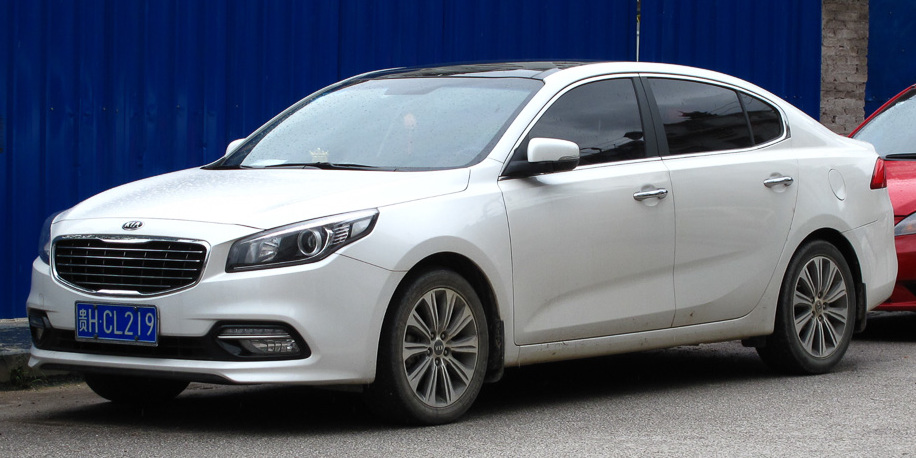
2. **2025 Kia K4**The 2025 Kia K4 marks a bold new chapter for Kia’s compact sedan lineup, stepping in to replace the long-running Kia Forte. On paper, it looks like a winner: an aggressive design, a major tech upgrade for the interior, and more space than you’d typically expect from a compact, especially in the back. It sports a bold digital interface, boasts enhanced safety features like advanced cruise control with full stop-and-go functionality, and all for a competitive price. Many modern car shoppers would see this as a complete package, ready to meet their needs.
But, as we all know, first impressions don’t always tell the whole story, especially when it comes to the complex science of crashworthiness. Despite its polished exterior and seemingly robust feature list, old test results for the K4 exposed a clear and alarming weak spot, particularly concerning rear passenger protection. This is a critical area where many new designs are now excelling, yet the K4 surprisingly lagged behind.
While the NHTSA awarded the K4 a five-star overall rating, its performance in the updated IIHS moderate overlap front test for models built before February 2025 was starkly different, earning a ‘Poor’ score. This is a serious red flag. During this test, dummy movement was uncontrolled, indicating that the restraints simply couldn’t manage impact forces effectively. This directly translated to a ‘Marginal’ rating for chest injury risk for the rear passenger dummy, a clear sign that occupants in the back might face significant danger in a frontal collision.
Other areas, such as headlights, seat belt reminders, and LATCH anchors, were rated ‘Acceptable,’ which is fine but hardly outstanding. The K4’s 9.9% rollover risk also added to the list of concerns. While the K4 isn’t a total collapse, and it has many appealing attributes, for a brand-new redesign, its crash performance—especially in rear passenger protection—falls noticeably short of what modern expectations demand. It shows that even a fresh start doesn’t guarantee a flawless safety record from day one.
Car Model Information: 2025 Kia K4
Name: Kia K4
Manufacturer: Kia
ModelCode: CL4
Production: 2024–present
ModelYears: 2025–present (North America)
Assembly: unbulleted list
Class: Compact car
Layout: Front-engine, front-wheel-drive
Engine: Petrol engine,Hyundai Smartstream engine#G3LE,Hyundai Smartstream engine#G4FM,Hyundai Smartstream engine#G4FP,Hyundai Smartstream engine#G4NS
Transmission: Manual transmission,Automatic transmission,8-speed automatic,Dual-clutch transmission,Continuously variable transmission
Related: Hyundai Elantra#CN7
BodyStyle: Sedan (automobile)
Platform: Hyundai-Kia K3 platform
Predecessor: ubl
Wheelbase: 2720 mm
Abbr: on
Length: ubl
Width: 1850 mm
Height: 1420 mm
Weight: convert
Caption: 2025 Kia K4 LX Sedan (Canada)
Drivetrain: Mild hybrid
Powerout: ubl
Categories: All Wikipedia articles written in British English, Articles with short description, CS1 Spanish-language sources (es), Cars introduced in 2024, Cars of Mexico
Summary: The Kia K4 is a compact car manufactured by South Korean automaker Kia. It was introduced in March 2024 as a replacement for the Forte/K3/Cerato, while the K3 nameplate was transferred to a subcompact car.
The car was first introduced on 21 March 2024, and was fully introduced on 27 March 2024, at the 2024 New York International Auto Show. It is available as a 4-door sedan and a 5-door hatchback.
Get more information about: Kia K4
Buying a high-performing used car >>>
Brand: Kia Model: K4
Price: $20,970 Mileage: 14,219 mi.
Read more about: Gear Up for Goodbye: 7 Beloved Models Waving Farewell to Manual Transmissions in 2025
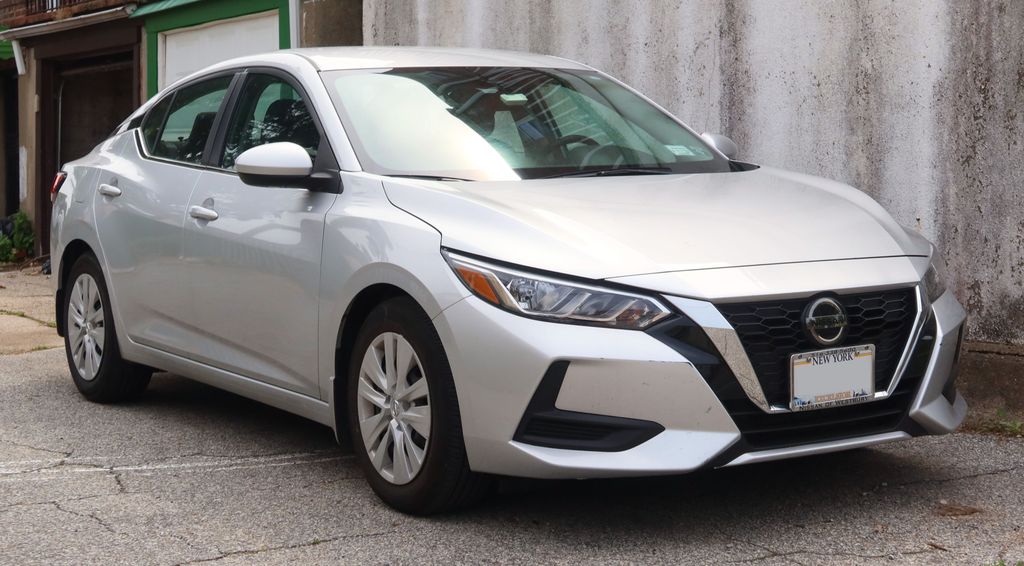
3. **2025 Nissan Sentra**The 2025 Nissan Sentra, at first glance, appears to be doing everything right. It comes standard with a suite of key safety technologies, including forward collision warning, lane departure alert, blind-spot detection, and crash imminent braking. This comprehensive offering is undoubtedly why NHTSA bestowed it with a five-star overall rating, despite a minor slip to a four-star rating in the frontal crash test for passengers. However, as the IIHS ramped up its testing protocols, the Sentra’s previously solid marks began to crack, revealing deeper issues.
In the updated moderate overlap front test, the Sentra’s performance dipped significantly, earning a ‘Marginal’ rating. The primary concern revolved around rear-seat safety, where the restraints failed to hold up as expected. Dummy movement indicated a clear and unacceptable risk for head and chest injury, a critical failure in a test designed to simulate real-world frontal collisions more accurately. Even its side-impact test, while not ‘Poor,’ only managed an ‘Acceptable’ rating, which, for a car that should be improving, is hardly a ringing endorsement.
Beyond occupant protection, the Sentra also struggled with pedestrian crash prevention, slipping to ‘Marginal,’ particularly in low-light conditions—a crucial aspect of modern urban safety. Add to that a ‘Poor’ headlight rating, which compromises visibility at night, and a 9.9% rollover risk, and it becomes increasingly difficult to defend the Sentra’s overall safety profile. These deficiencies paint a picture of a car that hasn’t fully kept pace with the rapid advancements in automotive safety.
Compounding these issues, a recent recall affected 199 2025 Sentras due to problems with manually adjustable driver’s seats not being fully secured to the outboard seat track. This sort of manufacturing oversight only exacerbates the growing list of concerns around the model’s safety integrity. While the Sentra remains a dependable daily driver in many respects, in a segment where competitors are consistently refining protection across every seat and every crash angle, the Sentra undeniably feels a step behind, struggling to meet elevated safety benchmarks.
Read more about: Built to Last: 10 Legendary Vehicles That Rarely Need a Major Engine Overhaul
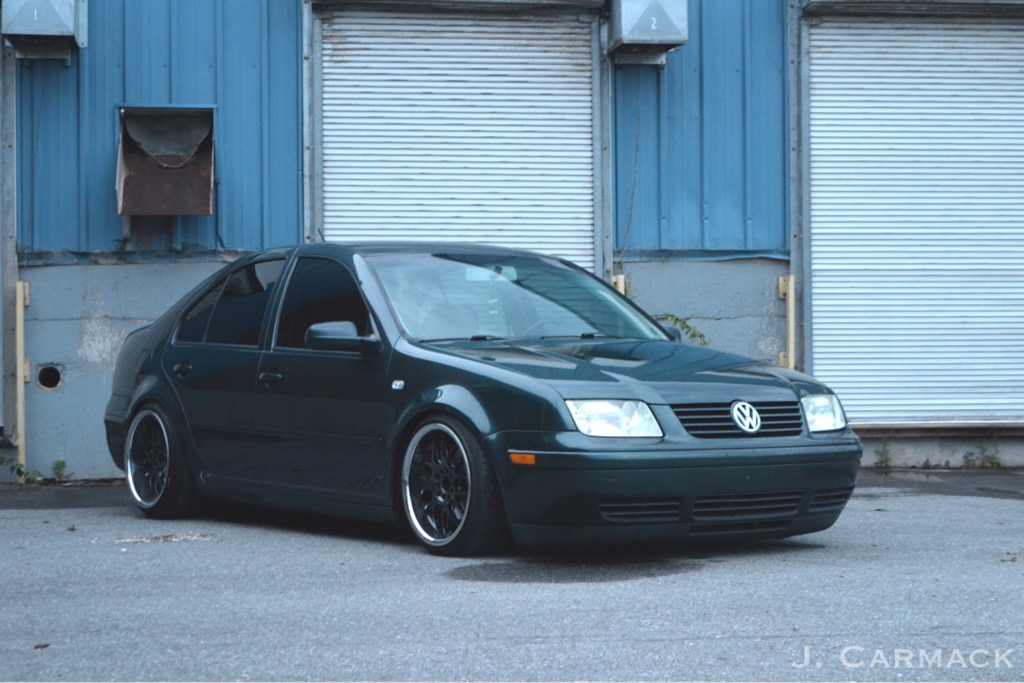
4. **2025 Volkswagen Jetta**The Volkswagen Jetta has long been hailed as the quiet achiever in the VW lineup—reliable, practical, and for years, one of the most dependable cars the brand has produced. The 2025 model aims to keep that reputation alive with a mild refresh, including a slightly more elegant exterior and a few internal tech tweaks. Mechanically, it largely carries over the familiar 1.5-liter turbo engine, and notably, VW’s IQ.DRIVE suite, which includes lane keeping, automatic emergency braking, and forward collision warning, is now standard. NHTSA even gives it a five-star overall rating, suggesting competence.
But as any seasoned automotive enthusiast knows, the devil is often in the details, especially when it comes to safety. A closer look at the Jetta’s crash performance reveals some genuine red flags. While the overall NHTSA score is high, the frontal crash ratings slide to four stars for both the driver and front passenger, an immediate downgrade from perfect. This discrepancy indicates that while the car might perform adequately in some broad categories, specific impact scenarios are not being handled optimally.
The IIHS also flagged several critical areas. Seat belt reminders were rated ‘Poor,’ a basic safety oversight that is frankly inexcusable in a modern vehicle. Furthermore, the standard front crash prevention system, designed to prevent collisions, barely scraped by with a ‘Marginal’ rating. This suggests it might not be as effective or reliable in real-world scenarios as its name implies. Injury scores weren’t reassuring either, with ‘Marginal’ ratings specifically noted for the driver’s pelvis and, critically, the rear passenger’s torso, pointing to vulnerabilities for occupants beyond the driver.
While side crash scores were solid, the Jetta’s high 13% rollover risk makes it feel less secure than many rivals. Even the ease of use for child seat anchors (LATCH) was only rated ‘Acceptable,’ lagging behind competitors that now offer far better, well-rounded safety performance across the board. So, if you’re considering the Jetta for its long-standing reputation for reliability, it’s crucial to weigh that against its surprisingly middling crash test performance. Not even good ratings on the structure cage and the small overlap front test could make us ignore these persistent problems that compromise true occupant protection.
Car Model Information: 2012 Volkswagen Jetta SE
Name: Volkswagen Jetta
Production: 1979–present
Class: Compact car
Sp: uk
Categories: 1980s cars, 1990s cars, 2000s cars, 2010s cars, All-wheel-drive vehicles
Summary: The Volkswagen Jetta () is a compact car/small family car manufactured and marketed by Volkswagen since 1979. Positioned to fill a sedan niche slightly above the firm’s Golf hatchback, it has been marketed over seven generations, variously as the Atlantic, Vento, Bora, City Jetta, Jetta City, GLI, Jetta, Clasico, and Sagitar (in China).
The Jetta has been offered in two- and four-door saloon / sedan and sometimes as five-door wagon / estate versions. Since the original version in 1980, the car has grown in size and power with each generation. By mid-2011, almost 10 million Jettas have been produced and sold all over the world. As of April 2014, Volkswagen marketed over 14 million, becoming its top selling model.
Get more information about: Volkswagen Jetta
Buying a high-performing used car >>>
Brand: Volkswagen Model: Jetta
Price: $8,765 Mileage: 81,223 mi.
Read more about: Unearthing Unexpected Value: 9 Economy Rides That Prove Affordability Doesn’t Mean Compromise
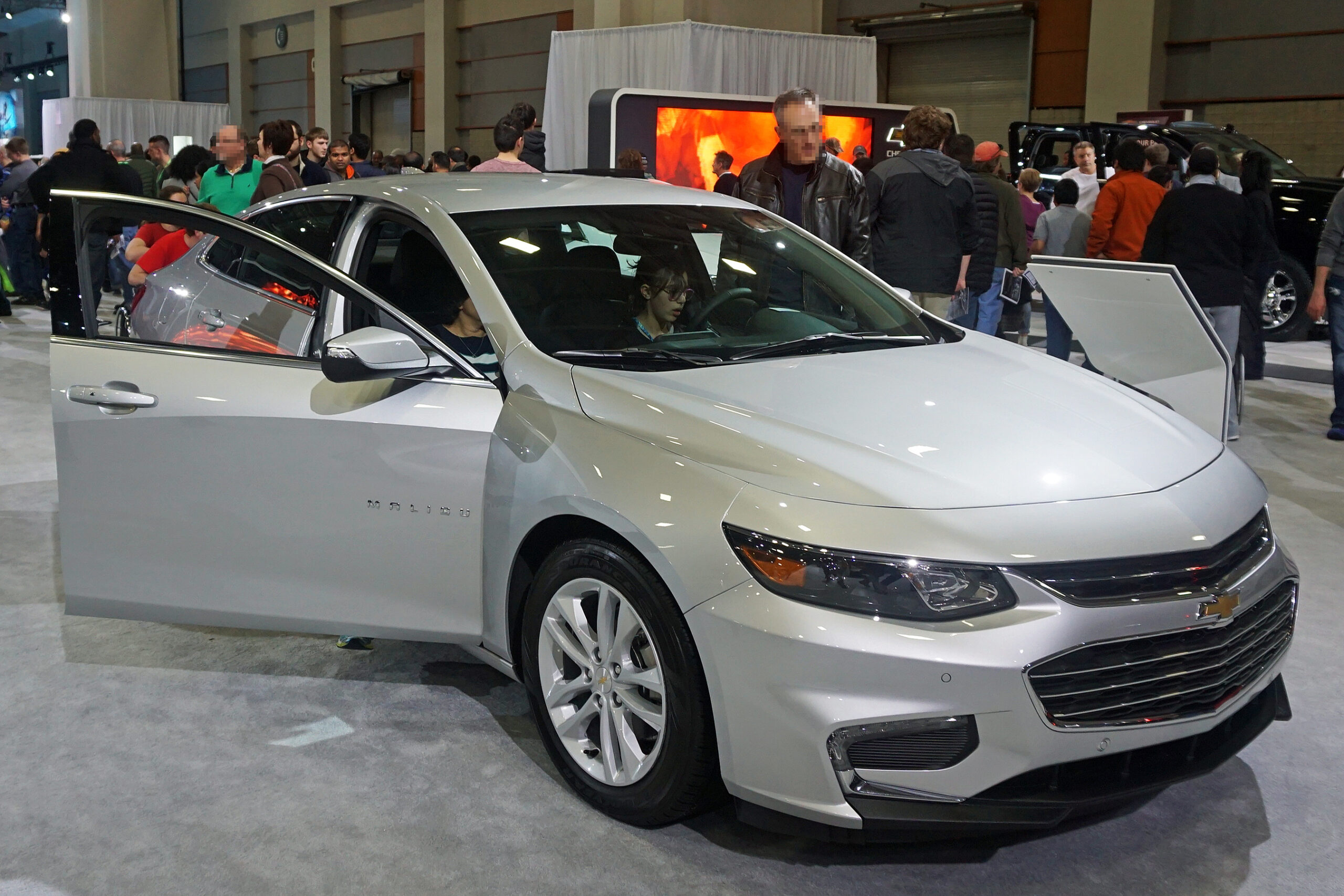
5. **2025 Chevrolet Malibu**The 2025 Chevrolet Malibu marks a quiet, perhaps somewhat melancholic, exit for a nameplate that has graced American roads for nearly six decades, as Chevrolet shifts its focus heavily towards EVs. This final model, unfortunately, doesn’t bring much to the table, especially when it comes to safety—which is a shame for a car with such a long history. While it does come standard with basic features like automatic emergency braking, forward collision warning, and lane departure alert, and even pulls a five-star overall rating from NHTSA, in today’s fiercely competitive market, these are essentially the bare minimum, not standout features.
Digging a bit deeper, we find more concerning details. The Malibu’s crash-imminent braking system only meets federal standards on higher trims, meaning base model buyers get a less capable system. Even more troubling, its dynamic brake support system doesn’t meet those standards at all, indicating a significant active safety deficiency. However, the bigger and more immediate concern for anyone looking at the Malibu is what happens when a collision is unavoidable.
In the updated IIHS testing, the Malibu stumbled badly in several key areas. Its side-impact protection was rated ‘Poor,’ which is an alarming result, suggesting occupants are highly vulnerable in lateral collisions. Furthermore, its structural cage also failed to hold up, indicating fundamental weaknesses in its crashworthiness design. The front crash pedestrian test was flagged ‘Poor,’ highlighting a lack of consideration for vulnerable road users. Even for the driver, injury risks to the head and neck ended up ‘Poor,’ with rear-seat and driver protection only earning ‘Marginal’ marks for head safety in the updated side-impact tests.
Even the smaller, often-overlooked safety details fell short. Headlights and child seat anchors both scored ‘Marginal,’ and LATCH usability followed suit, making it harder to properly secure car seats. For midsize sedan shoppers who genuinely prioritize safety, these results are undeniable red flags. There are simply better, more robust alternatives available that offer truly comprehensive protection, making the Malibu’s quiet departure feel less like a dignified farewell and more like a car that struggled to keep up with modern safety demands.
Car Model Information: 2023 Chevrolet Malibu FWD 1LT
Name: Chevrolet Malibu
Manufacturer: Chevrolet
ModelYears: 1964–1983,1997–2025
Class: Mid-size car
Layout: Front-engine, rear-wheel-drive layout
Predecessor: Chevrolet Chevelle
Successor: Chevrolet Celebrity
Caption: Ninth generation Chevrolet Malibu
Categories: 1970s cars, 1980s cars, 1990s cars, 2000s cars, 2010s cars
Summary: The Chevrolet Malibu is a mid-size car that was manufactured and marketed by Chevrolet from 1964 to 1983 and from 1997 to 2025. The Malibu began as a trim-level of the Chevrolet Chevelle, becoming its own model line in 1978. Originally a rear-wheel-drive intermediate, GM revived the Malibu nameplate as a front-wheel-drive car in 1997.
Named after the coastal community of Malibu, California, the Malibu has been marketed primarily in North America, with the eighth generation introduced globally. Malibu production in the US ended in November 2024, as the Fairfax plant is being retooled for the upcoming second-generation Chevrolet Bolt. The Malibu is now the last sedan to have been sold by Chevrolet in the US.
Get more information about: Chevrolet Malibu
Buying a high-performing used car >>>
Brand: Chevrolet Model: Malibu
Price: $20,995 Mileage: 48,071 mi.
Read more about: Why Classic Car Values Are Exploding: Unpacking the Market Surge and 14 Iconic Models Skyrocketing in Price
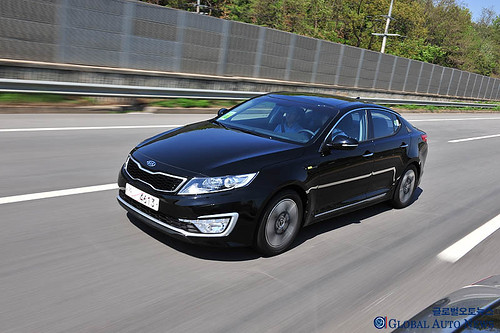
6. **2025 Kia K5**At first glance, the 2025 Kia K5 appears to have everything perfectly lined up. It’s sleek, offers a comfortable and refined driving experience, and comes well-equipped without the premium price tag often associated with such a package. Kia’s suite of driver-assistance technology, including Forward Collision-Avoidance Assist, Lane Keeping Assist, and Driver Attention Warning, comes standard, with higher trims offering even more advanced features like Highway Driving Assist and Junction Turning Detection. The fact that most K5s are built in the U.S. also gives it a homegrown edge in the crowded midsize segment. Add in a five-star overall rating from NHTSA, and it’s easy to assume the K5 has safety well covered.
However, that initial positive impression doesn’t fully hold up when you look at the latest IIHS results, particularly when it comes to the increasingly scrutinized area of rear seat protection. In the moderate overlap front test, which has now been updated to include a rear passenger dummy, the K5 scored ‘Poor’ overall. This is a significant setback for a model that otherwise seems so modern and capable. It suggests that while front occupants might be well-protected, those in the back are not afforded the same level of safety.
Specifically, rear head and neck protection didn’t hold up, and the seatbelt system showed ‘Marginal’ performance. Dummy movement raised clear red flags, signaling weak rear restraints during a frontal crash—a scenario where proper restraint is absolutely critical. The side-impact test didn’t offer much redemption either, landing at a ‘Marginal’ rating and raising serious concerns about the K5’s ability to perform adequately in real-world side collisions. These are not minor issues; they point to fundamental shortcomings in occupant protection that should give buyers pause.
It’s important to acknowledge that there’s still a lot the K5 does well. Its front crash prevention systems work reliably, and the standard tech offers genuine value. But with key areas falling short in newer, more rigorous safety evaluations, the K5’s five-star overall image from NHTSA simply isn’t telling the whole story. Consumers need to be aware that even a seemingly perfect package can have critical flaws hidden beneath the surface, especially concerning the safety of all occupants.
Read more about: Unmasking the Speed Demons: A Deep Dive into the 13 Car Models Most Often Ticketed in the U.S.
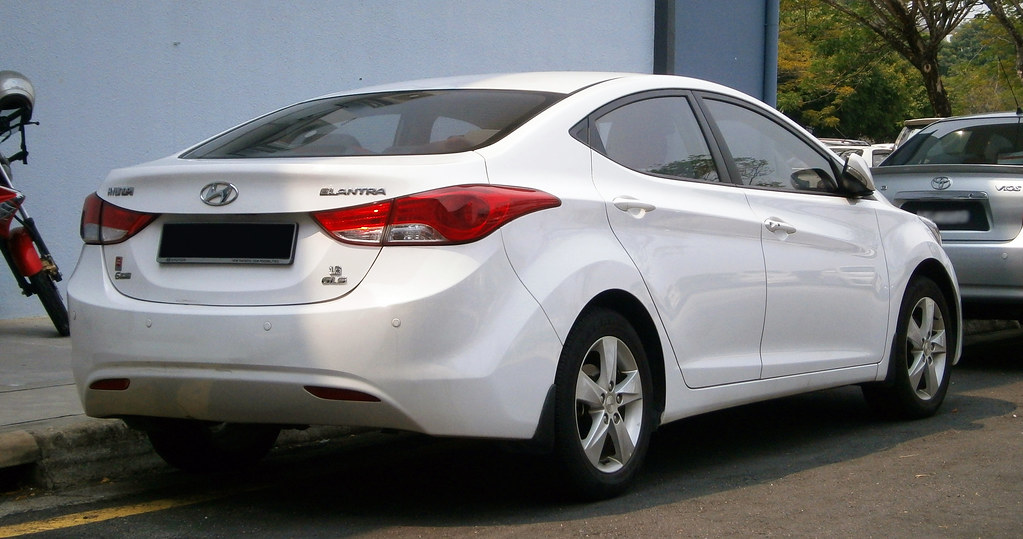
7. **2025 Hyundai Elantra**If you’ve been eyeing the 2025 Hyundai Elantra, your attraction is understandable. Its prices start from an appealing $22,125, and with the SmartSense package, you get a solid array of features like forward collision avoidance, lane-keeping assist, blind-spot alerts, and smart cruise control—all standard. Paired with a user-friendly infotainment setup, it feels like a compact sedan perfectly built for the demands of everyday life. On the surface, everything appears to be in place for a compelling, budget-friendly choice in the compact segment.
But once you look beyond all of the appealing features and the attractive price point, you begin to see its weak link. This year’s IIHS crash results reveal a significant and frankly disappointing drop in its safety performance. In the updated moderate overlap front test, which now critically includes a rear passenger dummy, the Elantra earned a ‘Marginal’ rating. While the front restraints performed well, a glimmer of competence, the rear seat tragically failed to keep the dummy secure, exposing a major vulnerability.
The detailed findings from the IIHS report are quite stark: the dummy’s shoulder belt slipped toward the neck, and the lap belt also slid into the abdomen. These critical failures earned it a ‘Poor’ rating specifically for restraint performance in the rear, indicating a high risk of injury to rear-seat passengers during a frontal impact. For a car that often serves as family transportation, this is an incredibly serious concern that cannot be overstated.
Other safety elements, thankfully, held steady. Seat belt reminders and child seat anchors were both rated ‘Acceptable,’ offering minor reassurance in an otherwise worrying report. However, for a model that was lauded as a Top Safety Pick+ just last year, this dramatic fall from grace is pretty disappointing. Considering its years of safety-related complaints stretching back to 2009, perhaps this decline was only a matter of time, suggesting underlying issues that haven’t been fully addressed. Even though it scored well in IIHS’s pedestrian detection and headlights tests and also holds a five-star NHTSA rating, that backslide in fundamental crash protection for rear passengers is tough to ignore, making its appeal decidedly less shiny.
Okay, so we’ve already taken a deep dive into seven vehicles that, despite their shiny new paint and cutting-edge tech claims, managed to flunk some of the most crucial safety evaluations out there. But, sadly, the story doesn’t end there. As frustrating as it is, the list of recent models exhibiting significant shortcomings in updated safety assessments continues, highlighting some truly concerning trends. From rear passenger protection that’s shockingly absent to glaring deficiencies in active safety systems, these next few vehicles remind us that in the pursuit of automotive excellence, safety sometimes gets left in the rearview mirror.
We’re not just talking about minor slip-ups; we’re talking about structural compromises that directly undermine occupant protection, forcing us to question what exactly we’re paying for when we buy ‘new.’ It’s a wake-up call that even the most established names can stumble when put through the paces of increasingly rigorous crash tests. Let’s not mince words: for anyone who believes a car should, first and foremost, keep its occupants safe, these next entries are tough pills to swallow.
Car Model Information: 2025 Hyundai ELANTRA SEL Sport
Name: Hyundai Elantra/Avante
Manufacturer: Hyundai Motor Company
Aka: Hyundai Avante,Hyundai Lantra (1990–2000, Australia and Europe),Hyundai i30 Sedan (2020–present, Australia)
Production: 1990–present
Class: Compact car
Layout: Front-engine, front-wheel-drive layout
Predecessor: Hyundai Stellar
Categories: 2000s cars, 2010s cars, 2020s cars, All Wikipedia articles written in British English, All articles with bare URLs for citations
Summary: The Hyundai Elantra (Korean: 현대 엘란트라), also known as the Hyundai Avante (Korean: 현대 아반떼), is a series of compact cars produced by the South Korean manufacturer Hyundai since 1990.
In South Korea, the first-generation model was initially sold under the “Elantra” nameplate, but starting from the second-generation, Korean models were sold under the “Avante” nameplate, with the “Elantra” name continue to be used on export models. The “Avante” name is not used in most export markets due to its similarity with Audi’s “Avant” designation, used for their station wagon models. As of 2018, Singapore is the only export market outside South Korea to utilize the “Avante” name.
In Australia and some European markets, the Elantra was initially marketed as the Lantra during its first two generations, due to the similarly named “Elante” trim for the Mitsubishi Magna in the former market, and the Lotus Elan in the latter. After Mitsubishi Motors Australia Limited (MMAL) dropped the “Elante” trim from the Magna range, and Lotus ceased production of the Elan in 1995, Hyundai standardized the “Elantra” name for both Australian and European markets in 2001, following the introduction of the third-generation model.
The first-generation model was also sold as the Bimantara Nenggala in Indonesia between 1995 and 1998. Since the seventh-generation, the “Elantra” name was retired in Australia, when Hyundai intergrated it into the i30 range, badging it as the i30 Sedan.
Get more information about: Hyundai Elantra
Buying a high-performing used car >>>
Brand: Hyundai Model: Elantra
Price: $20,681 Mileage: 14,803 mi.
Read more about: Unearthing Unexpected Value: 9 Economy Rides That Prove Affordability Doesn’t Mean Compromise
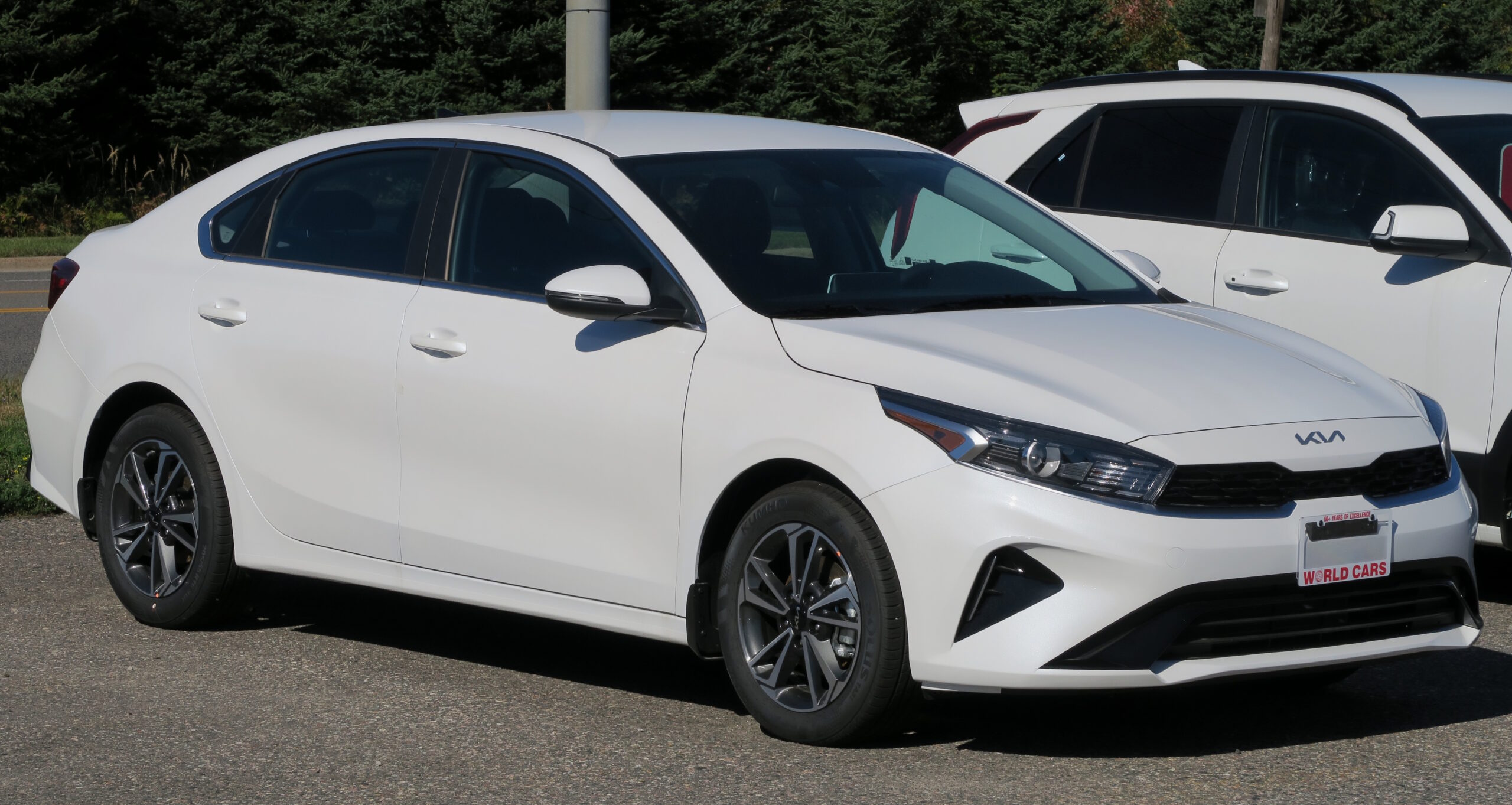
8. **2024 Kia Forte**Now, the 2024 Kia Forte – that name might sound familiar, and for good reason. It’s the compact sedan that’s actually being phased out, replaced by the K4 we mentioned earlier in this very list. Despite its pending departure and decidedly low price point, the Forte has still managed to grab attention, often appealing to budget-conscious buyers who want something that doesn’t scream ‘economy car.’ It’s important to remember that this year’s model design dates all the way back to 2019, and from a safety standpoint, Kia hasn’t exactly been in a hurry to implement significant changes, even in its twilight years.
While it does offer just enough tech to stay in the game, such as lane departure warning, forward collision alerts, and optional blind-spot monitoring if you’re willing to shell out a bit more, these features don’t paint the whole safety picture. For the price, it might seem like a decent enough deal on paper. However, as with many vehicles on this list, the moment you dig into the hard crash data, things truly begin to unravel, revealing vulnerabilities that are genuinely concerning, especially for a car that’s still available for sale.
The NHTSA gave the Forte a four-star overall rating, which sounds passable, but a closer look quickly reveals a problematic dip: the front passenger score dropped to a mere three stars. Over at the IIHS, the news gets even worse. The Forte scored ‘Poor’ in both the crucial moderate overlap front and side-impact tests. These aren’t just minor dents to its reputation; they are glaring red flags that scream ‘danger’ in a collision scenario.
Rear-seat results were especially rough in the IIHS evaluations, earning ‘Poor’ ratings across the board for head, neck, torso, and pelvis protection. During impact, the seatbelt system proved inadequate, allowing the seatbelt to slip, and in the side test, the dummy’s head contacted the window sill violently. This indicates a shocking lack of restraint effectiveness and structural integrity where it matters most for passengers. To add insult to injury, its headlights were also rated ‘Poor,’ compromising visibility at night.
Unless you upgrade trims, the crash prevention tech doesn’t even meet federal standards, which is pretty alarming for a modern car. Even the fundamental structure and safety cage were rated only ‘Marginal,’ as was its pedestrian crash prevention. With safety complaints already stacking up and the model clearly on its way out, the 2024 Forte is tough to defend for buyers who prioritize safety above all else. It’s a stark reminder that ‘new car’ doesn’t always equate to ‘new safety.’
Car Model Information: 2023 Kia Forte GT-Line
Name: Kia Forte
Manufacturer: Kia
Aka: Kia Cerato,Kia K3 (South Korea and China)
Production: 2008–2024
Class: Compact car
Layout: Front-engine, front-wheel drive layout
Related: Kia Ceed,Hyundai Elantra
Predecessor: Kia Cerato,Kia Spectra
Successor: Kia K4 (2024)
Categories: 2010s cars, ANCAP small family cars, All Wikipedia articles written in British English, All articles with dead YouTube links, All articles with dead external links
Summary: The Kia Forte (Korean: 기아 포르테), known as the K3 in Asia, the Forte K3 or Shuma in China and Cerato in South America, Australia, New Zealand and Russia, is a compact car manufactured by South Korean automaker Kia from mid-2008 until 2024, replacing the Kia Spectra. Throughout its production, it was available in two-door coupe, four-door sedan, five-door hatchback variants. It was not sold in Europe, which got the similarly sized Kia Ceed (except for Russia and Ukraine, where the Ceed and the Forte were sold together).
In some markets, such as Korea, Australia and Brazil, the Forte is marketed as Kia Cerato, replacing its predecessor of the same name. In Colombia and Singapore, the name Cerato Forte was used for the second generation, while Naza Automotive Manufacturing of Malaysia has assembled the vehicle since 2009, selling it there under the name Naza Forte.
Production of the Forte ended in 2024 and it was replaced by the K4, as Kia realigned their passenger car nomenclature, with the K3 name being transferred to a subcompact car replacing the Kia Rio.
Get more information about: Kia Forte
Buying a high-performing used car >>>
Brand: Kia Model: Forte
Price: $19,079 Mileage: 30,310 mi.
Read more about: Gear Up for Goodbye: 7 Beloved Models Waving Farewell to Manual Transmissions in 2025
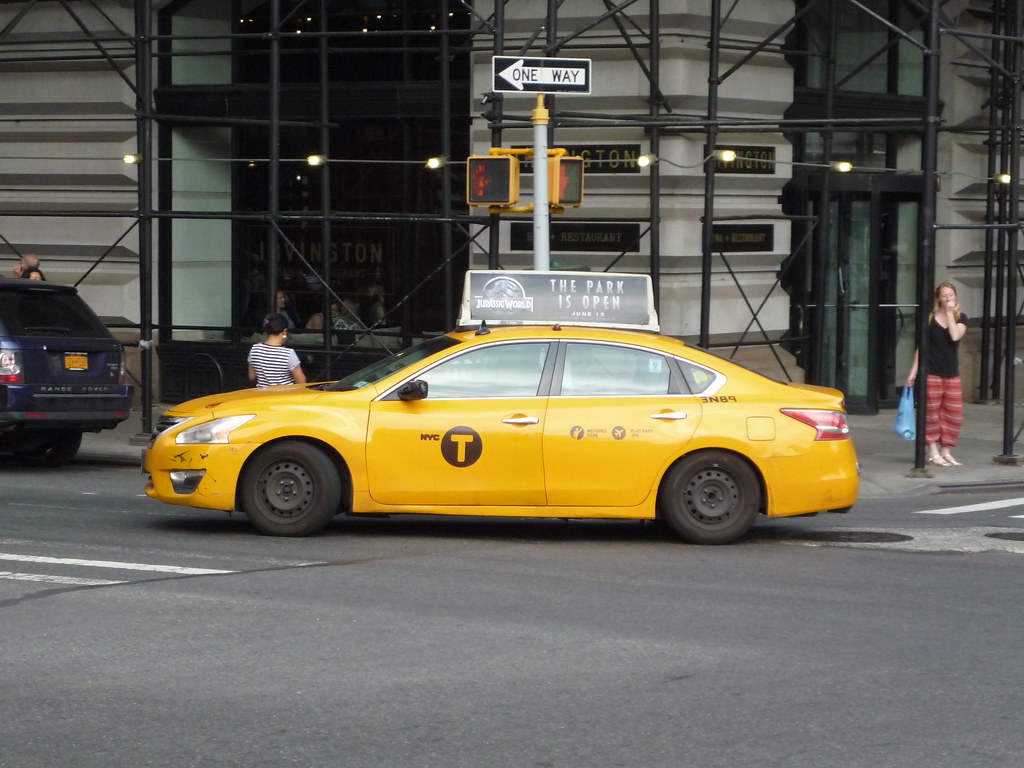
9. **2025 Nissan Altima**Ah, the Nissan Altima. It’s a name that has been a fixture on American roads for decades, and like any long-running series, it’s certainly had its good years and its bad. The 2025 model doesn’t exactly break that cycle, still leaning heavily on a reputation built over years, offering the familiar comfort and respectable fuel economy many have come to expect. Nissan has even made a point of including its full Safety Shield 360 suite across all trims, meaning even base model buyers get features like automatic emergency braking, blind-spot alerts, and rear cross-traffic warning. On the surface, it sounds like a solid package.
However, for a car that hasn’t seen a full redesign since 2019, the Altima is undeniably starting to show its age, and nowhere is that more apparent than in the realm of safety. The updated crash test results are not kind. The Altima earned a ‘Poor’ rating in the revised side-impact test, which isn’t just a minor blip; it directly signals weak structural performance in a type of collision that can be particularly devastating. It really makes you wonder if those decades of reputation are enough to gloss over such significant vulnerabilities.
It didn’t fare much better in the moderate overlap front test either, scoring a ‘Marginal’ overall. Digging deeper into that ‘Marginal’ score reveals a critical Achilles’ heel: rear passenger protection was a significant weak point, with ‘poor scores for torso and pelvis impact.’ Furthermore, the safety cage itself also rated poorly, indicating that the fundamental structure isn’t holding up as it should when faced with modern impact forces. Despite a five-star side crash rating from NHTSA, its frontal crash score dropped to four stars, even for the front passenger, highlighting a clear discrepancy in protection levels.
Beyond the physical impacts, the Altima’s active safety systems also left a lot to be desired. Pedestrian detection was rated ‘Marginal,’ which is a serious concern in increasingly busy urban environments, and its vehicle-to-vehicle crash prevention system came in at a ‘Poor’ rating. This means that not only does the Altima struggle to protect its occupants in a crash, but its technology isn’t doing nearly enough to help drivers avoid those crashes in the first place, putting everyone on the road at greater risk.
So, while the Altima remains a familiar name in the midsize segment, the safety gap between it and its more modern, more protective competitors is undeniably widening. For buyers who place crash protection as a top priority – and honestly, who doesn’t? – the Altima’s recent results are, unfortunately, far too tough to overlook. It’s a classic example of a car needing more than just a fresh coat of paint to keep up with the demands of modern safety.
Car Model Information: 2023 Nissan Altima 2.5 SR
Name: Nissan Altima
Caption: 2024 Nissan Altima SR (L34; US)
Manufacturer: Nissan
Aka: Nissan Bluebird
Production: 1992–present
Class: Compact car
Predecessor: Nissan Bluebird,Nissan Stanza
ModelYears: 1993–present
Categories: 2000s cars, 2010s cars, 2020s cars, All-wheel-drive vehicles, All Wikipedia articles written in American English
Summary: The Nissan Altima is a mid-size car manufactured by Nissan since 1992. It is a continuation of the Nissan Bluebird line, which began in 1955.
The Altima has historically been larger, more powerful, and more luxurious than the Nissan Sentra but less so than the Nissan Maxima. The first through fourth-generation cars were manufactured exclusively in the United States and officially sold in North and South America, along with the Middle East and Australia. For other markets, Nissan sold a related mid-size sedan called the Nissan Teana which was between the Altima and Maxima in terms of size. In 2013, the Teana became a rebadged version of the fifth-generation Altima.
The name “Altima” was originally applied to a top trim line of the Nissan Leopard for the Japanese market in 1986, and then to the Nissan Laurel Altima mid-size car sold in Central America and the Caribbean before 1992. In 1992, Nissan discontinued the Stanza which was a Nissan Bluebird clone, replacing it with the US-built Altima, while remaining a compact car. The first Altima was produced in June 1992, as a 1993 model. All Altima models for the North American market were built in Smyrna, Tennessee, until June 2004, when Nissan’s Canton, Mississippi plant also began producing the model to meet high demand.
Get more information about: Nissan Altima
Buying a high-performing used car >>>
Brand: Nissan Model: Altima
Price: $21,490 Mileage: 45,259 mi.
Read more about: Built to Last: 10 Legendary Vehicles That Rarely Need a Major Engine Overhaul
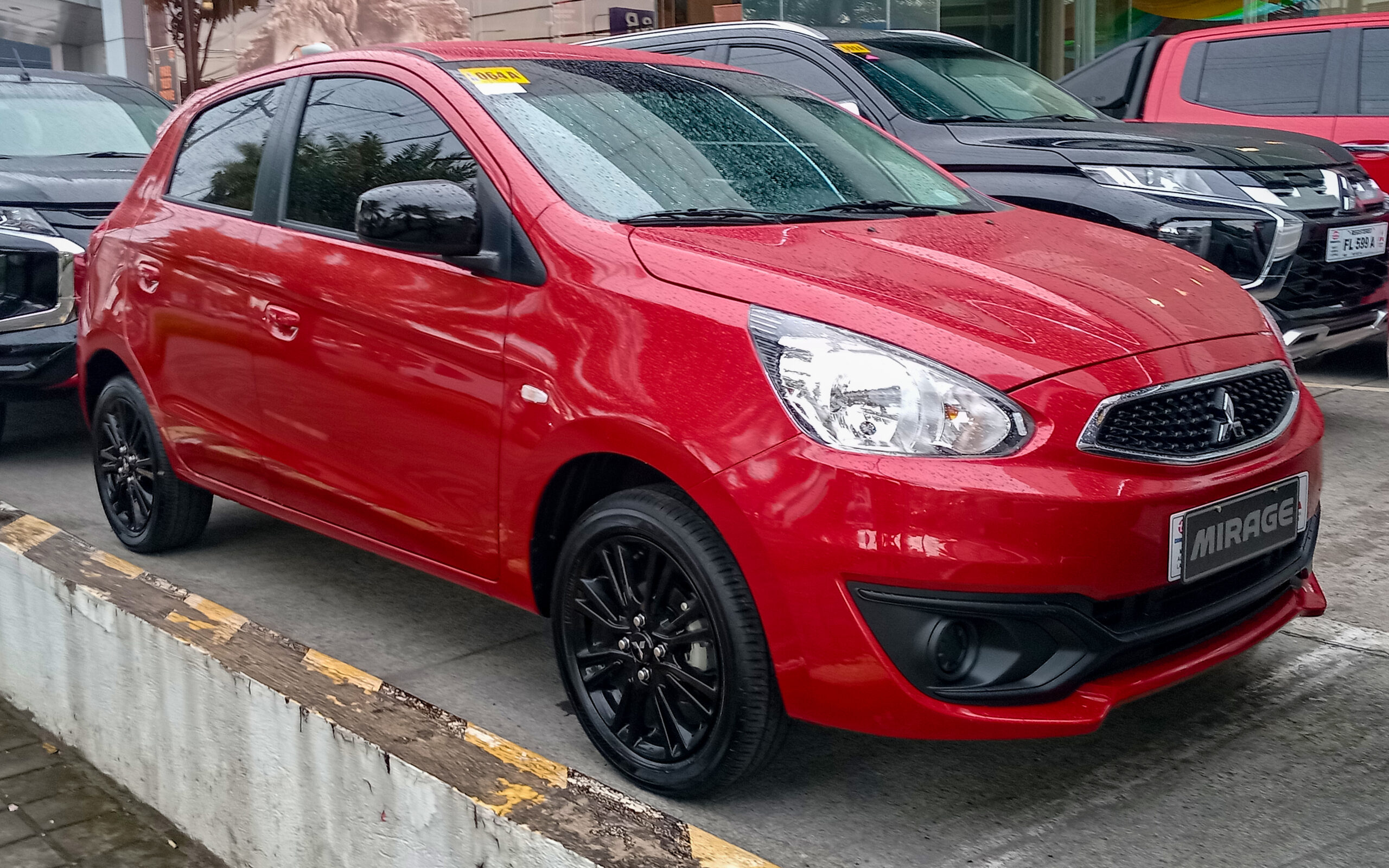
10. **2024 Mitsubishi Mirage**Finally, we arrive at the 2024 Mitsubishi Mirage, and let’s be brutally honest from the outset: cheap comes at a significant cost, and in this particular case, that cost is safety. The car’s current generation dates all the way back to 2014, and since then, Mitsubishi hasn’t exactly lavished it with safety updates. While it does boast excellent fuel economy—we’re talking up to 43 mpg on the highway—and features Mitsubishi’s RISE body structure, things go decidedly south when safety enters the conversation.
The NHTSA gave the Mirage a four-star overall rating, but don’t let that number lull you into a false sense of security. Its side crash score dragged that average down considerably with a dismal two-star result, a clear indication of severe vulnerability in lateral collisions. IIHS results weren’t any better; the small overlap front test came back ‘Marginal,’ with disturbing findings that the safety cage was literally showing signs of collapse. Even more concerning, lower leg and foot protection was rated ‘Poor,’ suggesting that even in relatively common frontal impacts, occupants face serious injury risks to their extremities.
Adding another gaping red flag to its crash profile, the Mirage’s rollover risk clocks in at an alarming 16.4%, making it the highest on this entire list. This figure alone should give any potential buyer pause, as it speaks volumes about the vehicle’s stability in a severe accident. Furthermore, the frontal crash test revealed significant intrusion into the driver’s space, indicating that the passenger compartment simply isn’t holding up as it should under stress, directly threatening occupant survival space.
As for active safety features, the Mirage offers standard forward collision mitigation and seven airbags, which are bare-minimum starting points. But when you look for more advanced, proactive accident avoidance tech, it quickly becomes apparent that you’ll be paying extra. Crash-imminent braking only meets federal standards on higher trims, and its dynamic brake support system didn’t pass those standards at all. Lane departure warning? Also limited to pricier models. Don’t get it wrong – it’s not that the Mirage gives you absolutely nothing in the safety department, it just doesn’t give you nearly enough where it truly matters, making its ‘value’ proposition incredibly questionable when lives are on the line.
It’s no surprise that the Mirage has consistently ranked high in driver death rates – no small statistical detail, that – and it’s a primary reason Mitsubishi is finally pulling the plug on its sale in America. For budget shoppers, its rock-bottom price might initially look like a win. But if safety is even a minor part of your equation, you might genuinely be better off stretching your budget a little for a used, reliable car that offers genuinely robust protection, rather than gambling with a ‘new’ car that, in critical moments, simply won’t hold up.
***
So, there you have it: a stark reminder that in the fast-evolving world of automotive engineering, ‘new’ doesn’t always automatically translate to ‘safer.’ While automakers continue to dazzle us with sleek designs, bigger screens, and more horsepower, the unvarnished truth, as revealed by rigorous crash tests, often tells a more sobering story. These vehicles, despite their recent market introductions, highlight critical safety shortcomings that simply cannot be ignored.
Car Model Information: 2024 Mitsubishi Mirage RALLIART
Name: Mitsubishi Mirage
Caption: Mitsubishi Mirage (sixth generation)
Manufacturer: Mitsubishi Motors
Production: 1978–2003,2012–present
Class: Subcompact car
Layout: Front-engine, front-wheel-drive
Predecessor: Mitsubishi Lancer (A70)
Successor: Mitsubishi Lancer#Eighth generation (2000)
Categories: 1980s cars, 1990s cars, 2000s cars, 2010s cars, 2020s cars
Summary: The Mitsubishi Mirage is a range of cars produced by the Japanese manufacturer Mitsubishi from 1978 until 2003 and again since. The hatchback models produced between 1978 and 2003 were classified as subcompact cars, while the sedan and station wagon models, marketed prominently as the Mitsubishi Lancer, were the compact offerings. The liftback introduced in 1988 complemented the sedan as an additional compact offering, and the coupé of 1991 fitted in with the subcompact range. The current Mirage model is a subcompact hatchback and sedan and it replaces the Mitsubishi Colt sold between 2002 and 2012.
Get more information about: Mitsubishi Mirage
Buying a high-performing used car >>>
Brand: Mitsubishi Model: Mirage
Price: $17,999 Mileage: 3,542 mi.
Read more about: Unearthing Unexpected Value: 9 Economy Rides That Prove Affordability Doesn’t Mean Compromise
The takeaway is clear: independent crash test data from organizations like IIHS and NHTSA isn’t just technical jargon; it’s absolutely vital information that empowers consumers. It’s a consumer’s best defense against glossy marketing, a necessary tool for cutting through the hype and truly understanding a vehicle’s ability to protect its occupants when it matters most. So, the next time you’re eyeing that shiny new ride, remember to look beyond the showroom floor and into the raw data. Your safety, and the safety of those you love, literally depends on it. Make an informed choice; make a safe choice.

